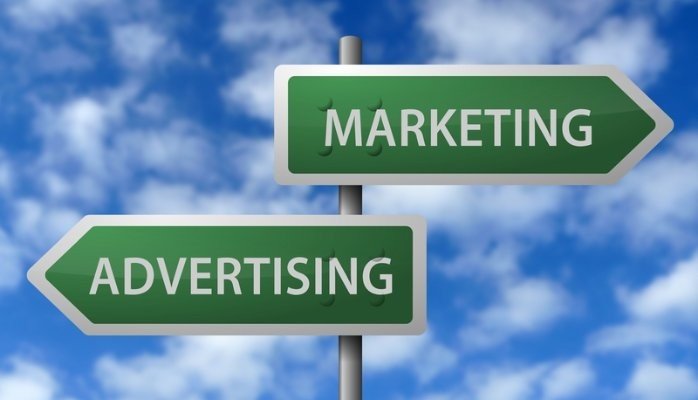Mission Critical: The #1 Goal for Business Success
The most fundamental fact in business is simple:
A Business’s #1 Goal is to Stay in Business.
To achieve this, the top priority must be to generate profit. Without profit, no business can make an impact, serve customers, or continue operations. Making sales to generate revenue is the daily mission.
But, to make sales, the people who are your potential consumers need to know your business exists—what it does and the benefits it provides. For that to happen, several key factors must align:
Value must be established: Consumers need to know why your product or service matters.
Attention must be grabbed: Even the best product will remain unnoticed without capturing people's interest.
Awareness must be created: It’s not enough for people to simply hear your name; they must understand your brand and offerings.
A business cannot survive if no one knows about it. That’s why every company, no matter the size, must start by answering these four critical questions:
1. How do we generate revenue?
2. Who is our customer?
3. What value do we provide?
4. How will we create consumer attention and awareness?
The answers to the first three questions are specific to each business and require deep thought and planning. The fourth question, however, while unique to each business, requires an understanding of marketing and advertising.
The Transformational Question
One of the most eye-opening questions I ask business owners is:
“What do you want the public to know about your business?”
Answering this question can be transformational. By thinking deeply about this, you unlock insights into your business’s core purpose and how you serve the market.
Once the message is clear, the next step is to deliver it to the public. This is where marketing and advertising come into play.
Marketing vs. Advertising: What’s the Difference?
The American Marketing Association says,
When creating a strategy to build awareness, businesses typically use a mix of paid advertising and free marketing efforts. Here’s how they break down:
"While sometimes used interchangeably, there are actually many differences between marketing and advertising. In basic terms, marketing is the process of identifying customer needs and determining how best to meet those needs. In contrast, advertising is the exercise of promoting a company and its products or services through paid channels. In other words, advertising is a component of marketing. But the differences do not end there."
Paid Advertising involves directly paying for visibility, typically through channels like:
TV, CTV and Streaming Media ads
Social media ads (Facebook, Instagram, LinkedIn, etc.)
Online Video and Display Ads
Search engine ads (Google Ads, Bing Ads)
These methods are effective because they allow businesses to reach large, targeted audiences quickly, but it requires a budget and continuous investment. The advantage? You control the message, timing, and placement of your ads, ensuring your message reaches the right audience at the right time.
Free Advertising and Marketing, while not involving direct costs, require time and effort. These include:
Social media marketing: Posting content, engaging with followers, and building brand awareness organically through platforms like Instagram, Facebook, and TikTok.
Content marketing: Creating valuable content, such as blog posts, videos, or podcasts, that provides value to your audience while promoting your business.
Telephone and In-person outreach: by owners and employees for the company.
Word of mouth and referrals: Encouraging satisfied customers to share their positive experiences with others.
The beauty of free marketing is its sustainability. Over time, as your brand gains more visibility, these efforts can compound, leading to greater organic reach without ongoing advertising spend.
Which Strategy is Right for You?
The key to a successful marketing strategy lies in finding the right balance between paid advertising and free marketing. Paid advertising offers immediate control, reach, and speed, allowing you to target specific audiences and generate quick results. On the other hand, free marketing methods build long-term credibility, nurturing organic growth over time. Both are essential, and a smart business leverages both to stay visible, build trust, and ultimately drive sales.
Budgets will ultimately control the marketing and advertising strategy. While a well-capitalized business might be tempted to invest heavily in paid advertising, it’s important not to lean too far in that direction unnecessarily. To create a sustainable strategy, business owners should begin by understanding their industry’s financial benchmarks. Reach out to industry-specific associations, consult with accountants, and use statistical resources to identify industry standards for marketing and advertising expenses as a percentage of gross profit. This financial guidance can help shape a marketing plan that aligns with your goals, ensuring you allocate the right resources while maintaining profitability.
In the end, a balanced mix of paid and free marketing ensures the public not only knows who you are but also understands the unique value your business provides.
Conclusion
The #1 goal a business has is to stay in business. The toughest part of achieving that goal is answering the question of how will we create consumer attention and awareness.
In today’s fast-paced and competitive business environment, it’s crucial to develop a marketing strategy that captures attention, communicates value, and builds trust. Both paid advertising and free marketing play important roles in this process. Paid ads deliver quick visibility, while free marketing fosters organic relationships and long-term brand growth.
Remember, budget constraints will shape your overall strategy, but they should not dictate it entirely. By balancing immediate advertising needs with organic marketing efforts, your business can create sustained visibility and trust with your audience. Take the time to analyze industry benchmarks, set a clear financial plan, and strike the right balance for your specific goals.
When your strategy is well-planned and thoughtful, your business will not only be visible—you will be well on your way to reaching the #1 goal of all businesses.
Expect to Win!
#xp2win



